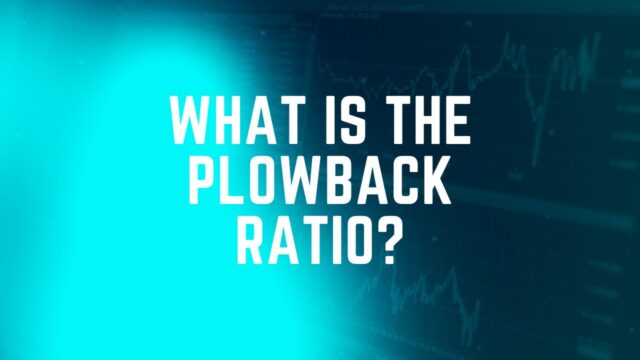
The plowback ratio is a measurement of the percentage of retained profit within a business. Younger companies typically have higher plowback ratios than more mature ones. Unlike mature businesses, which are less dependent on reinvesting profit to grow, younger companies are more likely to use plowback to expand operations. If a company does not pay dividends, its plowback ratio will be 100%. However, if a company distributes its entire net income as a dividend, the plowback ratio will be zero.
Retained earnings
The Plowback ratio of retained earnings refers to the percentage of retained earnings a company keeps after dividends are paid. The primary interest of investors is the dividend, which is the amount of net income the company declares and distributes to shareholders. Retained earnings refer to the part of the company’s net income that remains after tax and is used for reinvestment. As an investor, you should be looking for a high Plowback ratio, which indicates a growing company with more earnings than expenses.
The higher the plowback ratio, the less dependent a company is on debt and equity. Generally speaking, retained earnings are a better option than debt, because retained earnings do not involve default risk, interest payments, or dividends. It is also a lower-cost form of finance. As such, it is a good measure for investors to use in making an investment decision. In addition, a higher plowback ratio is an indication of a growing business with good prospects for growth.
The Plowback ratio of retained earnings is directly related to the dividend payout and is an indicator of future net income. At zero, the company cannot reinvest the earnings, but instead must pay dividends. At 100%, the company uses all net income in the business. If the plowback ratio is high, the company is profitable and its future growth will be secure. If it is low, the company should invest it into more productive ventures.
The plowback ratio of retained earnings refers to the percentage of retained earnings left after dividends. It is a useful ratio for investors and for businesses alike. While a high plowback ratio is positive for rapidly growing companies, it is negative for slower-growing businesses. If the company has a high ratio, it is not likely that it will use the remaining funds to expand its operations.
Dividend payout ratio
The plowback ratio is a measurement of the amount of profit a corporation has retained after paying out dividends. In most cases, a higher plowback ratio indicates a growing, dynamic company that believes that economic conditions are supportable and expects to see a long-term high growth. In contrast, mature businesses tend to adopt lower plowback ratios, suggesting they have sufficient cash holdings and sustainable business growth opportunities. This type of ratio is important for income-oriented investors, who look for a company’s dividend payout potential.
If a company’s payout ratio is high, investors are likely to be uneasy. Moreover, a high payout ratio suggests that the company is no longer in its growth stage, which could mean that it is unlikely to grow as rapidly as it did in the past. This is why it’s important to understand a company’s history and calculate its dividend payout ratio to be confident in its prospects for the future.
Besides the dividend payout rate, investors look at the plowback ratio to determine whether a company is retaining profits for growth. In the case of high retention ratio, investors are likely to avoid companies. In contrast, companies that retain all profits for growth tend to have lower retention ratios than those that pay out dividends. However, growth companies often prefer a higher retention ratio and believe that they will be able to reward shareholders faster by reinvested earnings.
Dividend payout ratio plowback ratio is one of the most important financial metrics for understanding the sustainability of a dividend-paying program. It measures the amount of dividends paid to shareholders as a percentage of the total income a company generates. This is an important metric for investors because it shows whether a company is happy to share its wealth with its shareholders. If it is, the company might be investing in future growth instead of focusing on current income.


































